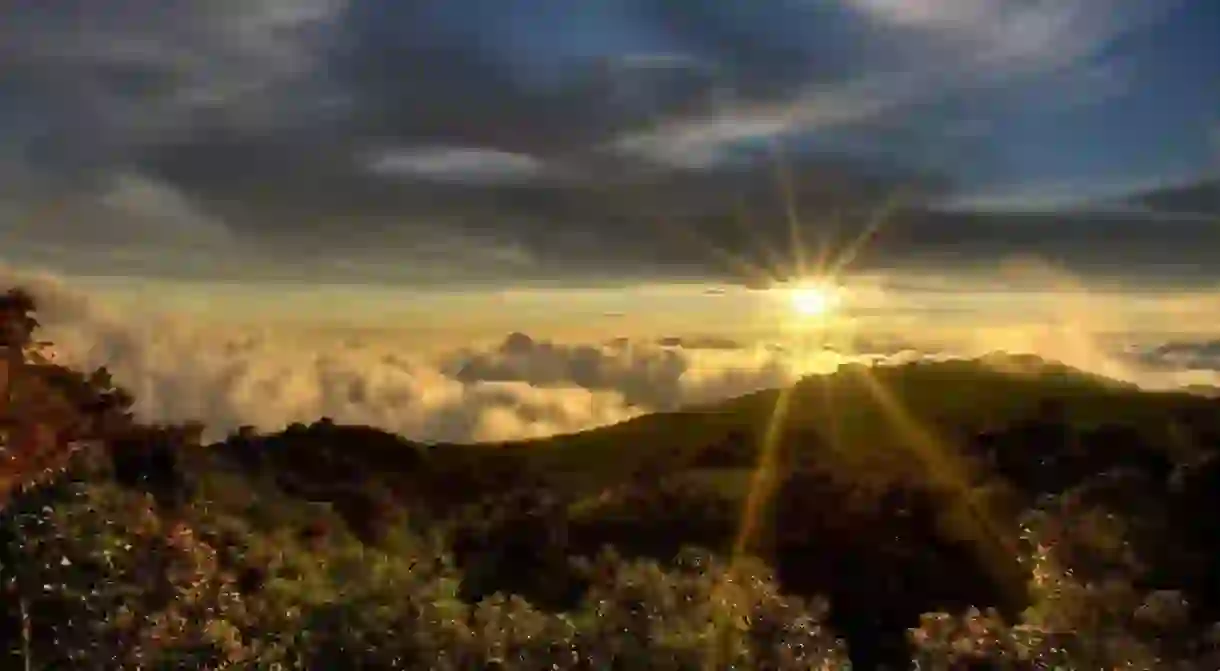5 Things You Didn't Know About Costa Rica

It seems that everyone is talking about Costa Rica these days. People from all over the world are visiting the country, reminiscing about the time they spent there, recommending it to their friends—even dreaming about a life amidst its streets or shores. Over two million people visit the country every year, eager to explore its rainforests, preservation programs, beautiful beaches and peaceful atmosphere. Here are some things you might not know about Costa Rica though.

Its national parks are world-famous
Costa Rica is home to four UNESCO World Heritage Sites—La Amistad National Park, Cocos Island National Park, Guanacaste Conservation Park, and Stone Spheres. La Amistad National Park was one of the first national parks to be shared between two countries (Panama and Costa Rica). Cocos Island National Park is home to a wide range of large pelagic marine animals, such as the scalloped hammerhead shark that migrates annually to be cleaned by king angelfish. The other two sites also abound in cultural and natural wonders.

It’s a world leader in conservation
Costa Rica is slightly smaller than Lake Michigan and only takes up 0.03% of the world’s landmass, yet it contains 5% of the earth’s biodiversity. There are roughly 500,000 species of mammal and marine life that call Costa Rica home. With over 25% of the country’s land under environmental protection, visitors are likely to have unique encounters with exotic animals or opportunities to see them thrive in their natural environment.

It’s the world’s hummingbird capital
On top of being one of the most biodiverse places on the planet, Costa Rica is home to a sixth of the over 300 hummingbird species worldwide. These tiny birds have feather patterns that make up hundreds of iridescent color combinations. Their little hearts beat upward of 1200 times a minute and their wings flap 50 to 200 times a minute—it’s no wonder that they have to feed five to eight times a day! Keep your eyes peeled and you will almost surely spot one among the flowering trees.

Its marine area surpasses its land area
The marine surface of Costa Rica is 10 times bigger than its terrestrial surface—its surface area is 223,939 mi.² (580,000km²), while that of the landmass is only 20,116 mi.² (52,100km²). The majority of Costa Rica’s ocean territory is made up of marine parks and nature reserves, which are all protected. The opportunity for ocean diving is endless, as both of the county’s coasts offer exquisite underwater landscapes, which are home to a wide variety of marine animals, such as whales, dolphins, sea turtles and jellyfish. In the Gandoca-Manzanillo Wildlife Refuge on the Caribbean coast, over 600 species of mollusks have been documented within a (3.1 mi.) 5km radius on the reef.

Its life expectancy is one of the world’s highest
Costa Rican citizens live on average to be above 77 years old. The Nicoya Peninsula, located in the northwestern part of the country, is also one of seven Blue Zones—areas defined as having a high population of people living to be over 100. This longevity could be owned to many reasons. Asides from being a relatively peaceful country, families are very tight-knit and there is a strong sense of community feeling. Many Costa Ricans are also involved in farming, fishing, and other active fields of work, which could contribute to their well-being. In addition, according to the Happy Planet Index Costa Rica is one of the top five happiest countries in the world when it comes to both expats and citizens.













